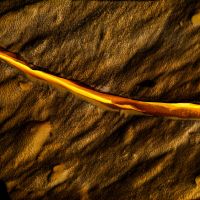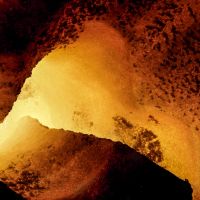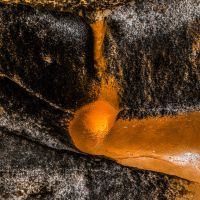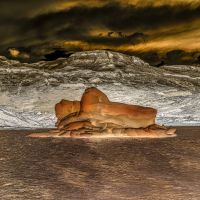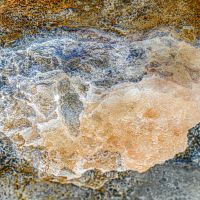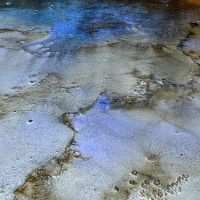project info
This work was born on the Perito Moreno glacier, in Argentina, perhaps the only iceberg of the Quaternary era, a UNESCO World Heritage Site, which still seems to maintain its own balance. It is a magical place, and also a symbol of climate change: Arctic and Antarctica are nature's thermometers. A work in progress from the South Pole to the North Pole, passing between the geysers of El Tatio in Chile.
When we look at things always from the same point of view, we accustom our eyes and our thoughts to resignation, not to reflection and to the development of creativity that may be necessary for the object of our observation, even if only to better understand what surrounds us.
The melting of ice contains within itself the concept of heat. In my works hot and cold walk together. Thanks to the experiments with the mobile phone (contained in The Beginning work), I walked one side of the glacier and photographed every crack I encountered, imagining the result I would have obtained inverting the image from positive to negative, as it had never been done until today. In this way I was able to convey the sensation of heat: the glacier cracks become volcano cracks, the expanses of water become incandescent lands.
The work is divided into three series:
- Cold: cracks become the main subject: tongues and shapes of fire follow one another, capturing the eye and bringing it inside them to then reveal that they are not what they seem.
- Geysers: we associate geysers with cold places, even if they are actually a manifestation of volcanism, to reaffirm that the concepts of hot and cold walk side by side.
- Walls: a broader look, but not too much, reveals undefined places where fiery ice plays in the water, but in reality they are pieces of ice drifting and melting.
When in 2008 I decided to tackle the environmental issue starting from these images, I posed an ethical problem between analogue and digital, which I had been using for just over a year. With a simple click I simplified hours of printing work on negatives and internegatives to get the results I was looking for, following in the footsteps of Man Ray. Thanks to my experience in the laboratory, I was able to evaluate an inversion not as a digital intervention, but as an analogue intervention, simplified by the advent of digital.
The negative meaning of the chromatic inversion that emerges in my photographs, contrary to what is represented in the history of photography where the negative was the positive principle of the process, coincides perfectly with the concept of change, it does not change the state of things: water there remains water and ice ice, but this way of representing reality makes the images not only attractive, but totally unsettling. The sensation of heat evokes volcanic images and disorients us, confuses us, and where photography is mystery and magic, inevitable questions arise and a desire to search and discover possible answers.
In these images there is no solution to the environmental problem, but the relationship between the daily experience with the element of water and the concept of change through its transformation, could activate in the viewer's thoughts an energy useful to the whole of humanity, in which everyone can do their part.
I like to think of capturing the gaze and the complicity of the "viewer" to lead him to imagine a better world possible.
awards
2020 - Winner of «Decade of Change» contest organized by 1854 Media, editor of British Journal of Photography
2010 - 1st prize "Terra, acqua, fuoco, aria" (with Shinebergs) Castello di Capalbio (GR)
2009 - Published in the London International Creative Competition (LICC) catalogue as Shortlist award
2009 - 2nd prize at PX3 Prix de la Photographie de Paris People's Choice
2008 - together with "The beginning" has won the publication of the book with PhotoBook HP Indigo Milan
2008 - Honorable Mention categories Fine Art/Landscape, Nature/Other and Deeper Perspective
press review
Text by Francesca Pietracci
Text by Laura Turco Liveri

